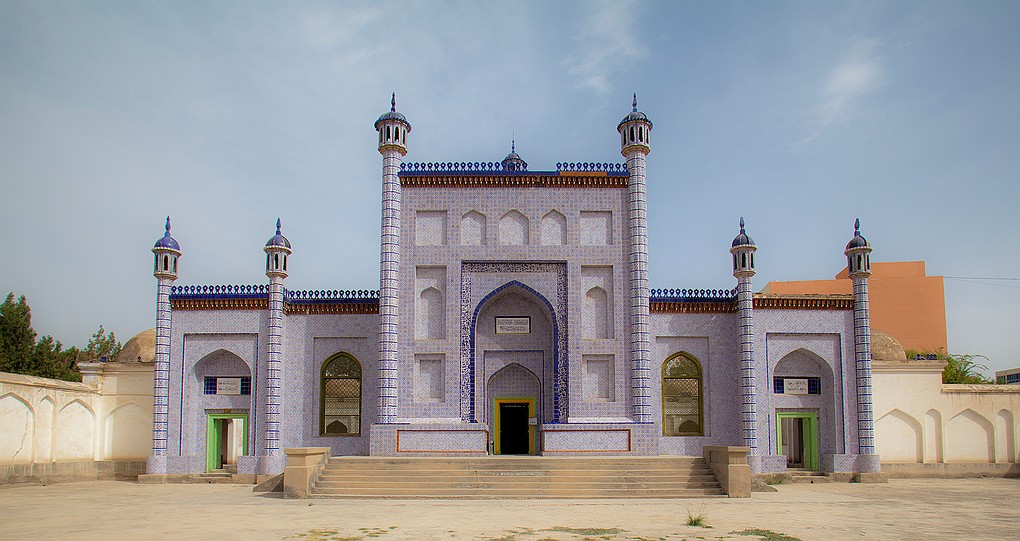Mehmet Seracettin Efendi: From Kashgar to Istanbul, the Pioneer of Modern Turkish Cuisine
Mehmet Seracettin Efendi: From Kashgar to Istanbul, the Pioneer of Modern Turkish Cuisine
Uyghur Heritage
Mehmet Seracettin Efendi, a visionary in Turkish culinary history, was born in the late 19th century in the vibrant city of Kashgar. Renowned for its rich cultural heritage and diverse culinary traditions, Kashgar significantly shaped Mehmet Seracettin's appreciation for food and flavours. Driven by a passion for cooking and a desire to explore new horizons, he embarked on a journey that would eventually lead him to Istanbul, the heart of the Ottoman Empire.
Mehmet Seracettin Efendi, Kashgarian, the founder of the Historical Sultanahmet Köftecisi, set out on a pilgrimage in 1901 at 10 with his elderly grandfather, sister, brother-in-law, and aunt. They travelled to Istanbul via Crimea. Following the death of his grandfather on the pilgrimage, Mehmet Seracettin Efendi stayed in Istanbul as a muhajir or immigrant. During this journey, they carried copper (stamp), silver (tenga), and gold coins minted by the Emir of Kashgar, Yakub Bey, in the name of Sultan Abdulaziz and Abdulhamid.
Journey to Istanbul and the Birth of a Culinary Legacy
In 1920, Mehmet Seracettin Efendi arrived in Istanbul, a city with cultural and gastronomic diversity. Inspired by the local cuisine, he introduced a new flavour to the city's vibrant food scene. He opened a small shop named Turan Kebapçısı in the historic district of Sultanahmet. This modest establishment became the birthplace of a culinary revolution, where Mehmet Seracettin Efendi presented his unique take on meatballs. This dish would soon captivate the taste buds of locals and visitors alike.
What set his meatballs apart was the meticulous selection of meats and the absence of spices. This approach highlighted the meat's natural flavours, creating a simple and exquisite taste. Cooked on a barbecue, the meatballs quickly gained popularity, drawing a loyal following to Turan Kebapçısı.
Expansion and Legacy
The fame of Mehmet Seracettin Efendi's meatballs continued to grow, and in 1944, the shop was renamed Halk Kebapçısı. This change marked the beginning of a new era, as Mehmet Seracettin and his three sons worked tirelessly to maintain the quality and reputation of their signature dish. The shop became a beloved culinary destination, known for its friendly service and consistent excellence.
In 1964, Mehmet Seracettin's legacy was carried forward by his sons, Selim and İsmail Tezçakın. Determined to honour their father's vision, they continued to serve Istanbulites under the name Meşhur Halk Kebapçısı. The century-old shop in Sultanahmet symbolised tradition and culinary mastery, drawing people from all walks of life to experience the iconic meatballs.
Global Recognition
The year 1976 marked a significant milestone in the history of Mehmet Seracettin Efendi's culinary empire. The shop was renamed Sultanahmet Meşhur Halk Köftecisi, cementing its place as a world-renowned institution. The name Sultanahmet became synonymous with exceptional meatballs, and the establishment's fame spread far beyond Turkey's borders. Tourists and food enthusiasts from around the globe flocked to Sultanahmet to savour the legendary meatballs, contributing to the global recognition of Turkish cuisine.
Conclusion
Mehmet Seracettin Efendi's journey from Kashgar to Istanbul is a testament to his dedication, passion, and culinary genius. Through his innovative approach to meatballs, he created a beloved dish and laid the foundation for a culinary legacy that continues to thrive. Today, Sultanahmet Meşhur Halk Köftecisi stands as a beacon of Turkish cuisine, honouring the memory of Mehmet Seracettin Efendi and his contributions to the world of gastronomy. His story is a reminder that great flavours know no boundaries and that the simplest ingredients, when prepared with care and love, can create a lasting impact on the world.
References:
1. Sultanahmet Köftesi (n.d.) 1920 yılından beri 4 kuşaktır değişmeyen bir inançla yolumuza devam ediyoruz. Available at: https://sultanahmetkoftesi.com/ (Accessed: 5 June 2024).
2. 100 Tarihi Lokanta (n.d.) Tarihi Sultanahmet Köftecisi – 1920. Available at: https://www.100tarihilokanta.com/tarihi-sultanahmet.../ (Accessed: 5 June 2024).
3. Yüzyıllık Hikayeler (n.d.) Sultanahmet Köftecisi. Available at: https://yuzyillikhikayeler.com/tar.../sultanahmet-koftecisi/ (Accessed: 5 June 2024).
4. Wikipedia (n.d.) Tarihi Sultanahmet Köftecisi. Available at: https://tr.wikipedia.org/.../Tarihi_Sultanahmet_K%C3... (Accessed: 5 June 2024).
5. Personal visit to Sultanahmet Köftecisi on 3 June 2024.
Sultanahmet Köftecisi
Alemdar, Divan Yolu Cd. No:4, 34110 Fatih / İstanbul
+90 (212) 511 39 60 - +90 (532) 422 41 82
Note: If you have time to visit Istanbul, you may have seen their story from a Uyghur bookshelf. You never know what good may happen.





Comments
Post a Comment